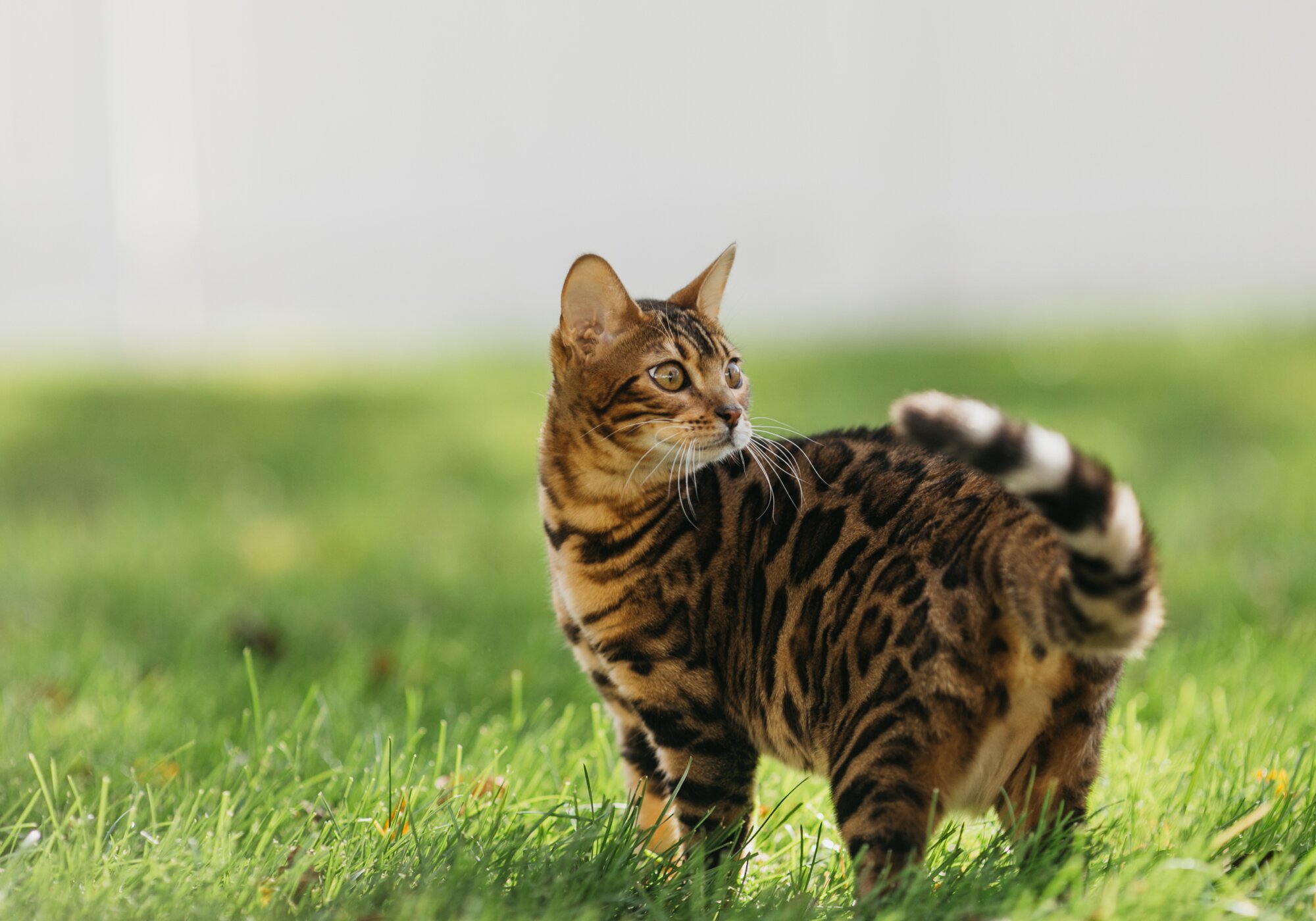If your cat has lice — don't stress. Pet care for cat lice is like human care. Plus, it's easy to treat cat lice and avoid lice infestations from occurring in the first place.
In this article, you'll learn:
- If, how, and why cats get lice
- What lice are and how they compare to other parasites
- How to treat a lice infestation and prevent them from returning

Can cats get lice
Though less common than fleas, cat lice are pesky parasites that can make their way to your cat. The likelihood of finding a louse on your cat increases in:
- Unsanitary environments
- Colder temperatures
- Multi-pet households
- Shelters with lots of cats
How do cats get lice
Lice are usually rare in cats and dogs. But, if your pet spends time outside or encounters another cat they may be at risk.
Rescues and shelters are places where lice and fleas are often seen. So, if you adopt, make sure your animal is treated before bringing them home.
3 ways to diagnose lice in cats
To determine if your cat has lice, you can always visit your veterinarian to help with a diagnosis. But, there are 3 simple ways to know if the cat-itching is related to lice:
- You can see visible lice in their fur.
- You can see white round objects (lice eggs) on their skin.
- They are showing signs of infection.

What are cat lice
Cat lice, or Felicola subrostratus, are small insects that survive in your cat's fur. Most are Mallophaga, known for chewing on the skin of animals. These archaic insects are also known as bird lice.
Are there different types of cat lice
There are several species of lice that are animal-related. These include:
- Felicola subrostratus (cat louse)
- Trichodectes canis (biting louse)
- Linognathus setosus (bloodsucking louse)
- Heterodoxus spiniger (chewing louse of dogs)
But, the type of lice you'll find on your cats are of the feline variety. Lice are species-specific. So, whether they are biting or chewing lice, the lice on your cats will always be one species — cat lice.
What do cat lice look like
They are wingless creatures with six legs. Each leg has claws that allow them to crawl and latch onto your pet. Lice use their mouths to bite or chew on your pet's skin, which can lead to irritation, infection, and disease.
The cat lice life cycle
From nit to a full-grown adult, lice take about 3-4 weeks to develop. Less complicated than the flea or tick life cycle, lice can rapidly reproduce on your cats.
Lice eggs (nits)
Female cat lice lay eggs called nits. They glue them to their host at the base of the hair follicle close to the skin. Nits are small, white, oval-shaped balls that attach to your pet with their sticky exterior.
Lice nymphs
Eggs molt into nymphs. Like adults, they are much smaller and can't reproduce yet. It's difficult to see lice at the nymph stage without a microscope or magnifying glass.
Full-grown lice
Nymphs molt one final time to develop into adults. After a few days, they can reproduce and start the cycle all over again. A female louse can lay 1-2 eggs a day so it's important to get rid of them quickly with effective treatment.
Can humans get lice from cats
Luckily for both of you, cat lice only infect cats. This means humans cannot get lice from cats (and vice versa). If you or a family member have head lice, your cat won't be at risk.
But, lice like to stick to one host or find another that resembles the first. So, if you have many pets they may spread from one cat to another cat.

How to treat a lice infestation
Cat lice infestations, or feline pediculosis, need thorough and consistent treatment. To kill and get rid of lice completely, follow these instructions.
1. Remove any visible lice with a fine-toothed comb.
Start by removing any lice from your cat's fur. Using a fine-toothed comb, part their hair starting at the neck to search for lice.
Move down their body paying extra attention to tricky-to-reach spots like their armpits or groin area. When you find a louse, comb from the hair follicle outward to remove it.
Place the louse in a sealable container, killing the lice, to share with your veterinarian if needed. Repeat the process until all visible lice and lice eggs are removed from your cat.
2. Treat your cat with a vet-quality lice treatment.
In a pinch, home remedies may be your go-to solution for getting rid of lice. Some common examples include oil and vinegar, petroleum jelly, and mayonnaise.
But, home remedies aren't effective in removing or preventing lice. And in some cases, they can be harmful to your cat's health. Look for topical treatments to treat your infested cat.
These contain active ingredients, like Fipronil, that are safe and effective for your feline friend. The best topical flea and tick treatments kill and repel fleas, ticks, and lice at all life cycle stages.
3. Clean your home and pet's belongings.
Even if you successfully remove the mama louse, nits can hatch on your cat for up to 2 or 3 weeks. This is why it's important to clean your cat and their surroundings.
You may want to shampoo your cat to remove lice. But, if you've applied a topical flea and tick treatment, wait at least 48 hours to bathe them.
Vacuum floors, carpets, and furniture. Empty the contents in a sealed garbage container right away. Then, dispose of or wash these items in hot, soapy water:
- Bedding and blankets
- Plush toys
- Grooming tools
- Collars and accessories
How to prevent cat lice
Treating cats for lice is only half the battle. Prevention is key to making sure you never deal with lice again. Here are a few ways to prevent lice on cats, dogs, and other animals.
1. Know where to look for lice on cats.
Cats are naturals when it comes to grooming so they tend to clean any nits or adult lice in their fur. But, there are some places they can't reach.
Check your cat for lice in these areas:
- The top of their head
- Their neck and chin
- Their eyes and ears
- Their armpits and groin
2. Learn the symptoms of cat lice.
In small batches, lice don't pose a serious threat to your cat's health. But, because they can multiply quickly you'll want to keep an eye out for these symptoms.
Be on the lookout for:
- Itching, scratching, rubbing
- Matted hair or hair loss
- Restlessness
- Skin irritation
- Open wounds and infection
3. Use a household spray.
One great way to control parasites is by using a household spray. Beyond treating your cats, it's important to treat your home.
Household sprays that contain an IGR help stop parasite production in its tracks. Instead, you may want to contact a pest control company to spray your home regularly.
4. Practice year-round prevention.
Lice treatment is a routine part of pet care for your dog or cat. Always seek veterinary advice when dealing with nasty parasites such as fleas or if you're unsure how to navigate an infestation.
Then, make sure your pet is treated with a vet-quality flea and tick treatment. Topical solutions are good for 30 days. They help control the spread of insects on your pets and in your home.


